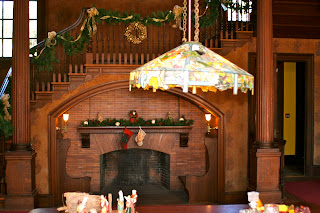Three's a charm! After two passages past Cumberland Island National Seashore we decided to stop and visit; a two night stay in St. Marys, Georgia afforded us the opportunity to take a National Park service Ferry (there is no bridge connecting Cumberland to the mainland) to the Island which is 90% parkland. Cumberland Island is Georgia's largest (18 miles long and between 1 1/2 to 3 miles wide) and southernmost barrier island, the largest undeveloped barrier island along the Atlantic coast. It is rich in history, architecture and natural areas; a nesting place of Loggerhead turtles ( 372 nests in the first 7 months of this year). Wild turkeys, deer, and armadillo populate the fields, and Maritime forests; horses, called marsh tackies because they roam and graze on acres of salt marsh, roam unfettered by time. Recent blood typing supports the theory that the diminutive horses we see today are linked to a group of Spanish horses from 400 years ago.
The Island is a complex ecosystem of independent communities, our favorite being the live oak forest where the sunlight filtered through the tree tops reflecting the undulations of the Spanish moss so gracefully draped across ponderous sweeping tree limbs that are blanketed by resurrection ferns. In stepping into the primordial forest we were embraced by a quietude and splendor that is rarely seen and felt; a home of Hobbits and spirits.
Not without human imprint, for thousands of years people have lived on Cumberland Is. from the Timucuan Indians to the Carnegie's. The island is home to the First African baptist Church established by freemen in 1893 and rebuilt in the 1930's (JFK Jr. and Carolyn Bessette secretly married there) the Plum Orchard, an 1898 Georgian Revival Mansion, donated to the National Park Foundation by the Carnegie family members in 1971. We thoroughly enjoyed a tour of Plum Orchard Mansion festooned in it's holiday finery.
Several days ago when the winds were high a flock of white pelicans, aligned like the Blue Angels, gracefully glided over the golden marshland and unto the sea without calculating the 28kn wind and 3kt current; what resulted looked like a snow drift of feathers as they quickly tumbled upon one another like a 10 car pile up on the New Jersey Turnpike in a blizzard. They quickly recovered and resumed their orderly progression.

A night on the hook provided a private glimpse at the nocturnal world, a waxing moon illuminated as the distant ocean enunciated peacefully. On a distant shore an owl delighted my senses with the haunting rhythmic hoohoohoo, hoohoo, hoo; so silent in flight but verbose in shrouded repose. Fish jump, a night heron protested an intrusion, real or imagined. The little dipper hangs over the SE horizon; so much is missed when we are tied to a dock!







